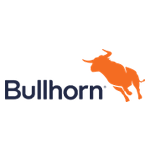As the job market has rebounded after COVID-induced stagnation, businesses are naturally keen to attract the talent needed to foster lost growth. In fact, our annual Global Recruitment Insights & Data (GRID) report found that 36% of UK recruitment firms see talent acquisition as their number one priority in 2022.
Interestingly, using employer branding to improve talent acquisition was reported as the number two focus for recruiters. This aligns strongly with current talent trends: the pandemic has caused much of the workforce to re-evaluate what it means to be an employee, with questions of value, purpose and work-life balance becoming more prominent.
As a result, talent are spending more time than ever researching and evaluating a potential employer - including the quality of the employee experience on offer. This plays a crucial part in determining whether or not they choose to apply for a job.
Therefore, businesses must work to ensure that their employer branding accurately reflects what the organisation stands for, and that it’s promoted effectively across a plethora of digital platforms.
These employers are increasingly looking to their recruitment experts to provide guidance in this area in order to give them a competitive hiring edge. So, if you’re a recruiter, here are some tips for leveraging employer branding to boost talent acquisition.
Convey company culture
Talent are drawn toward organisations that create a positive working environment where employees both excel and feel valued. All employees take part in and are emblematic of the culture an organisation creates, but the values that a business holds ultimately come from the top.
Company culture must be conveyed throughout the recruitment process – and not just when the candidate asks about it. Recruiters must make it a priority to proactively discuss company culture with applicants. They must also be conscious that the quality of the job application process – how efficient, engaging and professional it is – can reflect either positively or negatively on the company’s culture.
Another key to successfully reaching the best candidates is building and sustaining a strong reputation as a great place to work. A positive reputation as a workplace represents employee trust, and to broadcast this trust, firms should build up a network of online advocates. There’s no use developing an outstanding culture but keeping it a secret.
These networks can be quite diverse. Employees are good options considering they have experienced the culture for themselves, but former business associates and clients can work just as well. Reviews on websites like Glassdoor, referrals from a friend, and other forms of advocacy will position an organisation as an attractive place to work.
Another great example is using the employer’s own social media channels to highlight company culture, and encouraging employees to share social media content that showcases their positive experience. Recruiters should be proactive in helping their clients build these networks of employee advocacy.
Develop consistent messaging
Another tenet of quality employer branding is consistency. Candidates are often viewing an organisation’s content across multiple channels, so recruiters must ensure their clients’ brand messaging, particularly as it relates to employee experience, is consistent.
A company’s voice can reveal its attitudes towards both its employees and its industry. In short, branding should articulate what makes an organisation stand out from the competition.
Equally, a business’ messaging and tone of voice should reflect the culture and working environment. This means, for example, that if the working culture is informal, web copy should have a loose feel. Similarly, job adverts must be clear, descriptive and inclusive to encourage more applicants, while it’s also a good idea to supplement these adverts with additional information on company culture and perks.
Following on from this, authenticity is everything when it comes to making an impact. It might be tempting to follow trends, but if it isn’t true to the company’s brand, these efforts will backfire.
Amplify the employer brand across different channels
Employer branding is only effective when combined with a strong talent acquisition foundation and effective use of your communication channels. We know from our data that candidates like to interact with job opportunities using a variety of different platforms. For example, 38% like to be emailed, 19% prefer a chat on LinkedIn, and 18% favour a good old fashioned phone call.
This act of promoting the employer brand across different channels simultaneously is often known as ‘recruitment marketing’. In a similar way that traditional marketing is becoming rapidly digitalised, so too is recruitment marketing. It helps that technology investment within the recruitment profession has grown exponentially. Just two years ago, 25% of firms in the GRID Recruitment Trends Report cited the presence of a digital transformation strategy – that number has now tripled to 84%.
Employers may look to their recruitment firms to act as strategic advisers in this area. Which channels should we use? Which messaging? How can we automate these recruitment marketing processes? These are the types of questions clients are increasingly asking of their recruitment partners.
Focusing on employer branding in 2022
As talent acquisition remains the number one priority for recruiters in 2022, it’s important to consider the role that the right employer branding can play in attracting candidates. Branding is about so much more than just the logo – it’s the entire experience that a candidate goes through, the culture enjoyed by existing employees, and the company’s digital presence.







